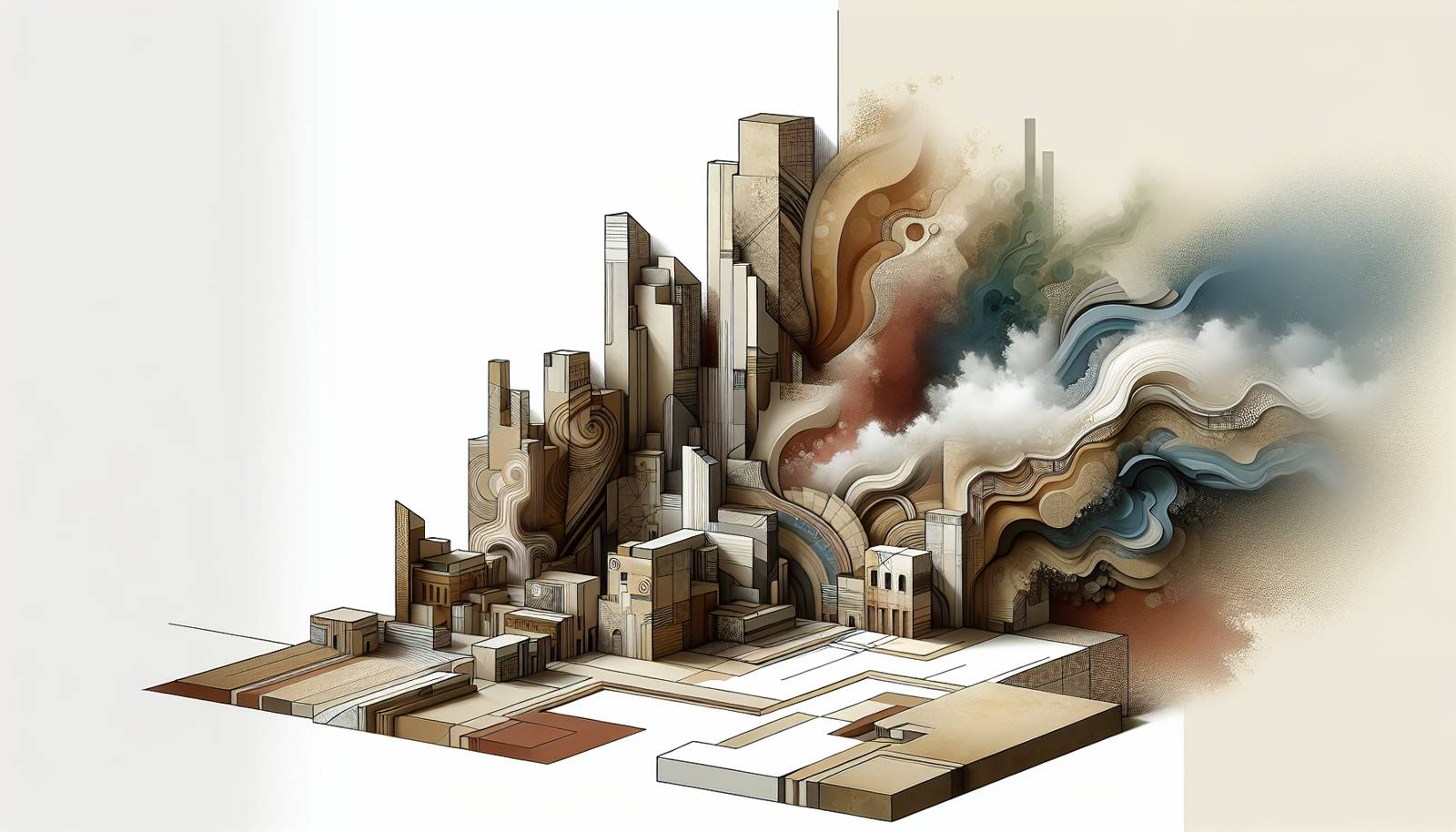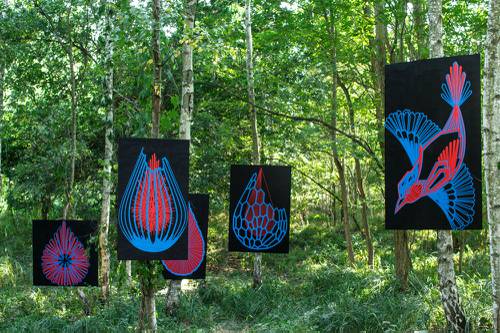
FAQ About The Evolution of Art Installations in Urban Spaces

What are art installations in urban spaces?
Art installations in urban spaces are artistic projects or exhibits that are specifically designed for public areas within cities. These installations often involve a variety of media, including sculptures, murals, light displays, and interactive components, and are typically intended to engage the community, beautify public spaces, and provoke thought and dialogue about various cultural, social, or political themes.

How have art installations in urban spaces evolved over time?
The evolution of art installations in urban spaces has seen a shift from traditional sculptures and aesthetic projects to more interactive, participatory, and conceptual works. Originally focused on beautification, modern installations increasingly focus on social engagement, technology integration, and addressing contemporary issues such as environmental concerns or social justice. The advent of digital technology and social media has further transformed these installations, allowing for dynamic, ever-changing works that engage viewers in innovative ways.

Why are art installations important in urban spaces?
Art installations play a significant role in urban spaces by enhancing the aesthetic appeal of cities, fostering community engagement, and promoting cultural expression. They serve as landmarks, provoke dialogue among residents and visitors, and can transform ordinary public spaces into vibrant community hubs. Additionally, they can raise awareness about social issues, inspire change, and serve as a platform for artists to express their creativity in unconventional environments.

What are some famous examples of urban art installations?
There are numerous famous urban art installations worldwide, such as "The Gates" by Christo and Jeanne-Claude in Central Park, New York City, which featured 7,503 gates with free-flowing fabric. Another notable example is "Cloud Gate" by Anish Kapoor in Chicago, known as 'The Bean,' a reflective, interactive sculpture. Additionally, "The Serpentine Pavilion" in London showcases innovative temporary structures by different architects each year, blending art and architecture.

How do art installations in urban spaces engage communities?
Art installations engage communities by providing interactive and accessible art experiences outside traditional museum settings. These installations often encourage public participation, such as interactive displays or community-driven projects where residents contribute to the creation process. They spark conversations, promote cultural understanding, and can even mobilize community activism around local issues, making art a catalyst for community building and social interaction.

What challenges do artists face when creating urban art installations?
Artists face several challenges when creating urban art installations, including securing necessary permits, funding constraints, and logistical issues related to scale, materials, and durability in outdoor environments. Additionally, they must consider community perspectives, potential public controversies, and often work within the constraints of city regulations. Ensuring the installations are accessible and maintain their intended impact over time can also be difficult.

How do urban art installations impact local economies?
Urban art installations can have a positive impact on local economies by attracting tourists, creating jobs, and stimulating business in neighboring areas. These installations can increase foot traffic to local businesses and heighten the cultural profile of a city, potentially leading to increased investment in other community projects. Furthermore, they can contribute to a city's brand and identity, making it a more attractive place to live and work.

Are urban art installations always permanent?
Not all urban art installations are permanent. Many are temporary or ephemeral, designed to be experienced for a short period of time before being dismantled or altered. Temporary installations allow artists to experiment with materials and concepts that may not be viable for long-term projects, while also keeping the city's art scene dynamic and ever-changing. However, some installations, due to their popularity or cultural significance, become permanent fixtures in the urban landscape.

How do urban art installations reflect cultural identities?
Urban art installations often reflect cultural identities by incorporating themes, symbols, and narratives that resonate with specific communities or broader cultural contexts. Artists may draw upon local history, traditions, or socio-political issues to create works that speak to the collective experiences of the community. Such installations can serve as platforms for underrepresented voices and foster intercultural dialogue, enhancing cultural awareness and appreciation.

What role do local governments play in urban art installations?
Local governments play a crucial role in the development and support of urban art installations by providing funding, permitting, and regulatory framework. They often collaborate with artists, cultural organizations, and community groups to facilitate projects, ensuring they align with broader city development plans and cultural strategies. Governments may also sponsor public art programs, competitions, and commissions to encourage artist engagement and enrich the city's cultural landscape.

How does technology influence urban art installations?
Technology has significantly influenced urban art installations by enabling interactive and immersive experiences that were not previously possible. Artists use technologies such as LED displays, projection mapping, augmented reality, and mobile apps to create dynamic, engaging installations. These technologies allow for real-time interaction, audience participation, and the incorporation of digital content, expanding the possibilities for creativity and viewer engagement in public art.

What is the difference between street art and urban art installations?
While both street art and urban art installations contribute to the cultural fabric of cities, they differ in form and intent. Street art, often characterized by graffiti, murals, and stencil work, is typically unsanctioned and can be politically charged, focused on self-expression, or addressing societal issues. Urban art installations, on the other hand, often involve larger-scale projects that may be sanctioned and funded by local authorities or organizations, with a focus on community engagement and aesthetic value.

Can urban art installations help address social issues?
Yes, urban art installations can play a role in addressing social issues by providing a platform for raising awareness, sparking dialogue, and encouraging community reflection on pressing societal concerns. Artists may design installations that highlight issues such as inequality, environmental sustainability, and human rights, creating visual narratives that engage the public and inspire change or action. These installations can serve as catalysts for community-driven solutions and policy advocacy.

How are urban art installations funded?
Funding for urban art installations often comes from a mix of public and private sources. Local governments may allocate budgets for public art as part of urban development plans, while cultural organizations, businesses, and philanthropists may sponsor specific projects. Artists can also apply for grants from arts councils or foundations. Crowdfunding and community fundraising have also become popular ways to support art installations, allowing residents to directly contribute to projects.

What materials are commonly used in urban art installations?
Artists use a wide variety of materials in urban art installations, depending on the concept and context of the project. Commonly used materials include metal, wood, textiles, plastic, and recycled materials, chosen for their durability and ability to withstand weather conditions. Contemporary installations may incorporate technology-based materials such as LED lights, sensors, and digital screens. The choice of materials often reflects the installation's thematic focus and intended interaction with the public.

How do urban art installations contribute to environmental sustainability?
Urban art installations can contribute to environmental sustainability by using eco-friendly materials, promoting messages about conservation and climate change, and incorporating elements that interact with the natural environment, such as solar power or water collection systems. Artists may design installations that raise awareness about ecological issues or directly contribute to environmental efforts, such as green spaces or habitat restoration, encouraging sustainable practices through artistic expression.

How can community members get involved in urban art installations?
Community members can get involved in urban art installations by participating in workshops, contributing ideas or materials, and volunteering during the creation process. Many projects are designed to include public input, with artists hosting collaborative sessions where residents can influence the design or implementation of the installation. Engaging in public forums or providing feedback to local councils on proposed projects are other ways community members can contribute to urban art initiatives.

What is the role of art installations in urban revitalization?
Art installations play a significant role in urban revitalization by attracting visitors, enhancing the aesthetic value of neglected or underutilized spaces, and fostering a sense of community identity and pride. These projects can lead to increased investment and development in surrounding areas, creating a ripple effect that boosts local economies and improves quality of life. By transforming spaces and engaging residents, art installations contribute to creating vibrant, attractive environments in cities.

How do you measure the success of an urban art installation?
The success of an urban art installation can be measured through various metrics, including public engagement levels, media coverage, and feedback from the community. Success may also be gauged by the installation's impact on foot traffic to the area, its ability to provoke discussion or inspire change, and its contribution to the city's cultural and economic landscape. Long-term value is assessed by whether the installation becomes a beloved or iconic part of the urban environment.

What future trends are anticipated for urban art installations?
Future trends in urban art installations are expected to include greater integration of technology, with artists continuing to explore virtual and augmented reality, interactive digital platforms, and kinetic elements. Sustainability will likely remain a key focus, with installations increasingly using eco-friendly materials and highlighting environmental themes. Collaborative projects involving multiple disciplines—such as art, science, and technology—are also anticipated, offering unique, interdisciplinary approaches to art in urban spaces.
